Coleus is renowned for its colorful, bushy leaves. Do you want to know how to make a Coleus plant bushier to display its vibrant foliage better? Well, we researched this to help you, and here is what we found!
You want to prune your Coleus to make it appear bushy. Here is how you can do this:
- Asses the plants.
- Determine where to prune.
- Pinch off new leaf growth.
- Trim the blossoms.
In this article, we’ll discuss each step mentioned above. Also, we’ll share with you tips for taking care of these Coleus plants and propagating ideas to have a lush and healthy plant all year long. So keep reading to learn more!
![variegated leaves painted nettle garden coleus, How To Make Coleus Bushy [Step By Step Guide]](https://gardentabs.com/wp-content/uploads/2022/11/How-To-Make-Coleus-Bushy-Step-By-Step-Guide.png)
How Do You Make A Coleus Bushy?
Pruning the Coleus will keep a specific appearance or shape of it. By cutting back on new growth, you can stop the stems from getting too long and stimulate the plant to produce more leaves in other places.
Pruning will keep bushes looking bushy and produce dense foliage. Given that Coleus are prized for their exquisite foliage, a whole plant covered in leaves is usually more appealing than stem-bearing flowers.
Coleus plants are frequently pinched to emphasize the leaves rather than the blooms. Below are the procedures to prune and have a perfect bushy Coleus in your garden.
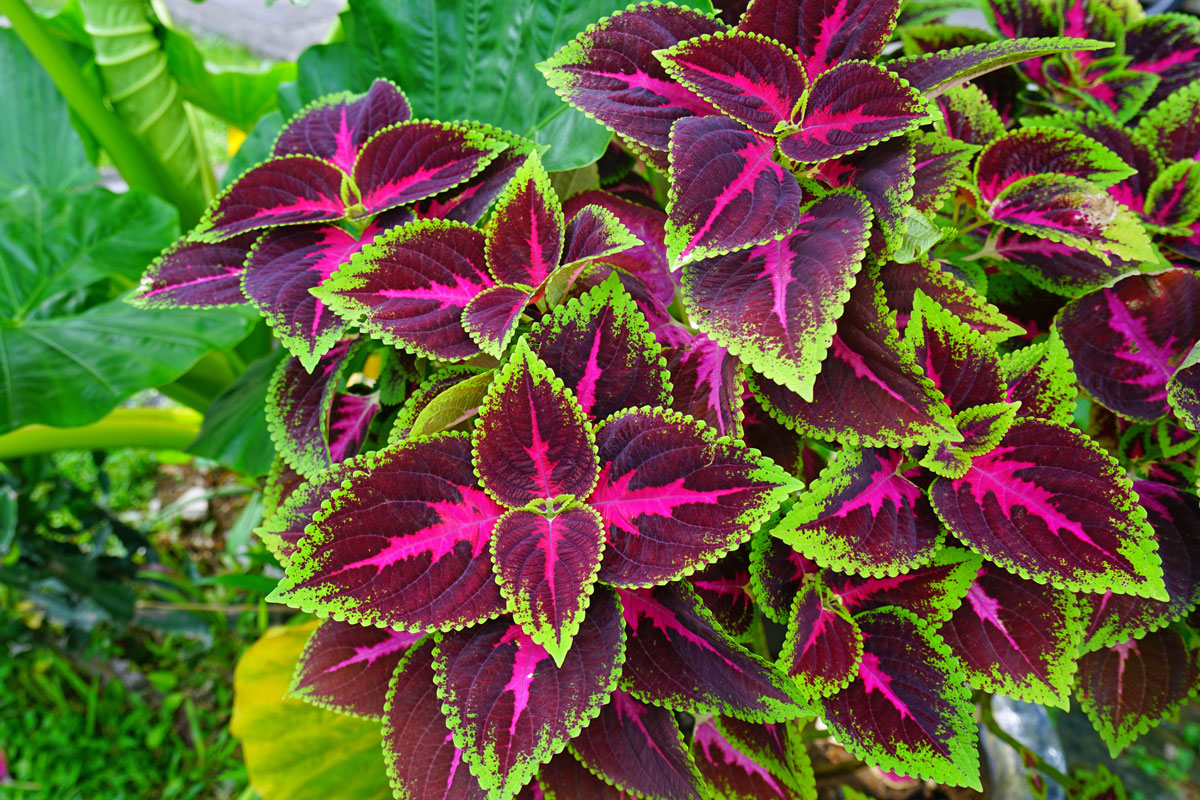
1. Asses The Plants
Check to see if the Coleus is developing uniformly and consistently by looking at the plant as a whole. Determine whether the plant is outgrowing its container or if one side is taller or longer than the other parts of the plant.
2. Determine Where To Prune
You can try to prune any uneven growth or unbalanced areas to give the Coleus a more uniform appearance. It depends on your preference; however, if the Coleus fills the container to the brim, it can be pruned back to get the desired effect.
4. Pinch Off New Leaf Growth
You can get rid of the growth by pinching the new leaves as they appear with your fingers. Use clean pruning shears or clippers to prune back portions of the stem, mainly if the plant has grown leggy.
Check out this pair of pruning shears on Amazon.
4. Trim The Blossoms
When blossoms or flower buds first appear, pinch them to stop the plant from flowering.
The plant can redirect its energy toward new foliage by removing flower buds. You can deadhead the plant or take out the spent flowers if you choose to keep the flowers.
Should I Pinch My Coleus? How Do You Do This?
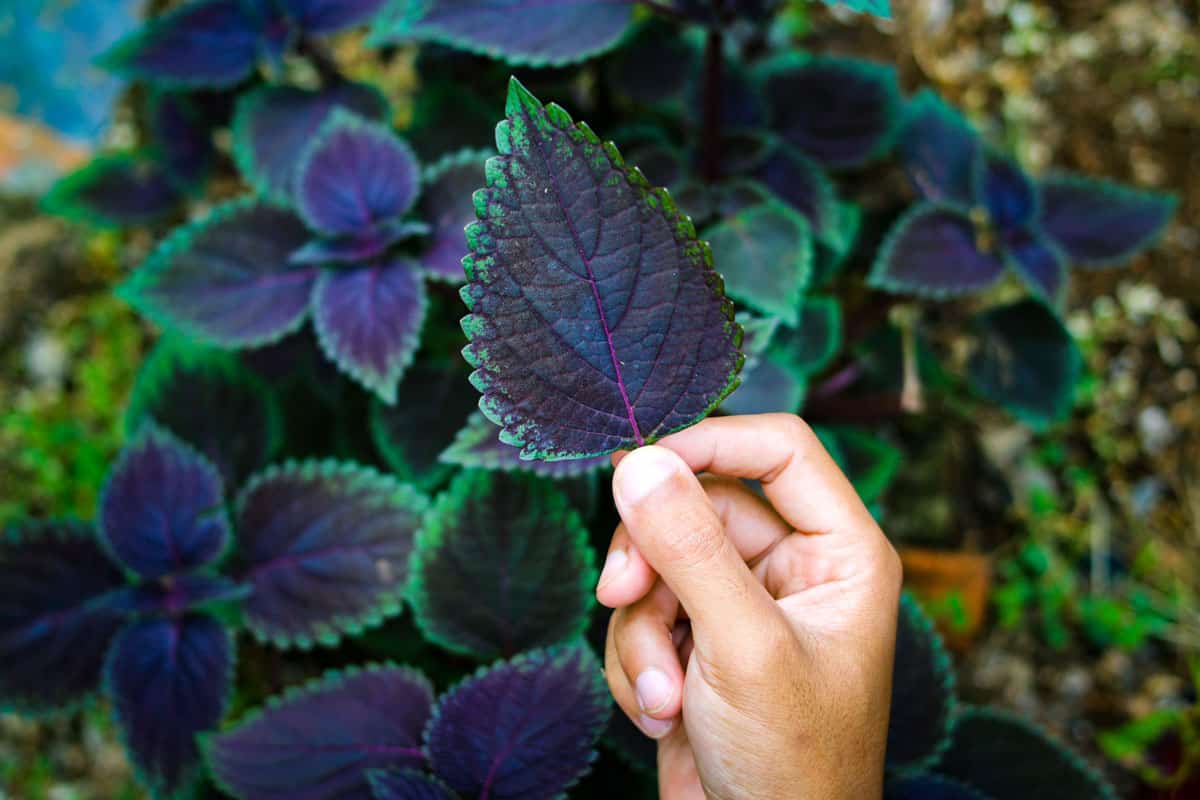
Pinching is a pruning technique. Prune only the mature Coleus plants (at least 6 inches tall). Coleus grows most vigorously in the spring and summer, which is the ideal time to prune the plant.
You can trim Coleus as frequently as required to maintain the ideal appearance.
You can remove both leaves and blooms when doing so. The plant needs time to produce new growth in between trimming operations if you want it to have a chance to recover.
How To Take Care Of Coleus
Coleus plants often called Mayana, are easy to grow and have vibrant foliage in various colors, shapes, and sizes. However, for this plant to thrive yearly, you must first fulfill its basic requirements.
These requirements include:
Fertilizer
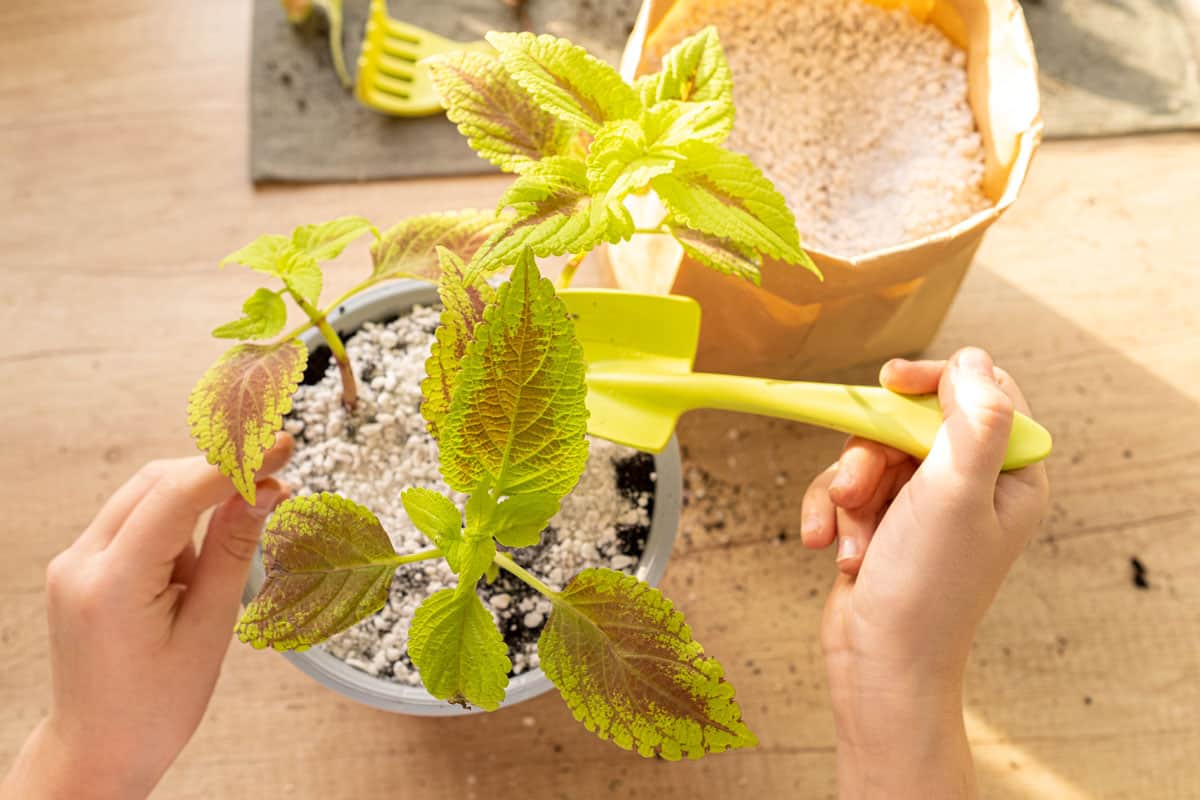
You might not need to feed coleus plants if your soil is rich. Add a balanced slow-release fertilizer to the bed if your soil is poor. Coleus leaves will have the optimum color if you use minimal fertilizer.
See this slow-release fertilizer on Amazon.
Use a water-soluble fertilizer once a month to feed plants grown in containers.
Because regular watering removes nutrients from the potting soil, container plants typically require more supplemental feeding than garden plants.
Check out this water-soluble fertilizer on Amazon.
Soil
The ideal soil for Coleus is continually moist, rich, loose, and well-draining. Add compost or similar organic substance, such as perlite, to the ground before planting.
Any high-quality potting soil will suffice for potted plants. A container with drainage holes is best.
Check out this perlite on Amazon.
Check out this potting mix on Amazon.
Loose potting soil is ideal for Coleus in containers. Start with a good mix with a pH between 6 and 7, which is neutral to slightly acidic.
To prevent the soil in the pot from staying moist all the time, which might result in root rot, ensure there is good drainage.
Sunlight
While Coleus prefers partial or complete shade over direct sunlight, the amount of light exposure depends on the type.
While newer cultivars like the Wizard series thrive in full sun, the traditional seed-grown Coleus does best in partial to full shade.
View these Wizard Coleus seeds on Amazon.
In most traditional Coleus cultivars, too much sun can scorch the leaves and cause them to lose color. Coleus thrives in filtered early light and afternoon shade, particularly in warmer areas.
Throughout the warmer (brighter) months, plants grown in containers typically receive sufficient light from the indirect sun. However, they might require being exposed to filtered sunshine during the winter.
They need a little light, but they need some.
Temperature & Humidity
Coleus does well in hot, humid weather. Even a slight chance of cold in temperate regions will cause plant death.
When it gets chilly at night, and the temperature falls into the 50°F, bring plants inside or cover them. Before the weather turns cold, take cuttings for propagation.
Refrain from placing indoor plants near vents of air conditioners or other cold areas. The plants will appreciate moisture from a humidifier or in the bathroom in dry conditions.
Don't move potted plants outside in the spring until it is at least 70°F.
Water
The optimal soil for Coleus plants is regularly moist but not soggy. Extended dry periods limit plant growth and cause the edges of the leaves to turn brown.
In warmer weather, Coleus in containers may require twice-daily watering.
Watering twice daily may be necessary for outdoor containers. Water when the top inch of soil feels dry to the touch, and let the soil dry out a little between waterings.
How Do You Propagate Coleus?
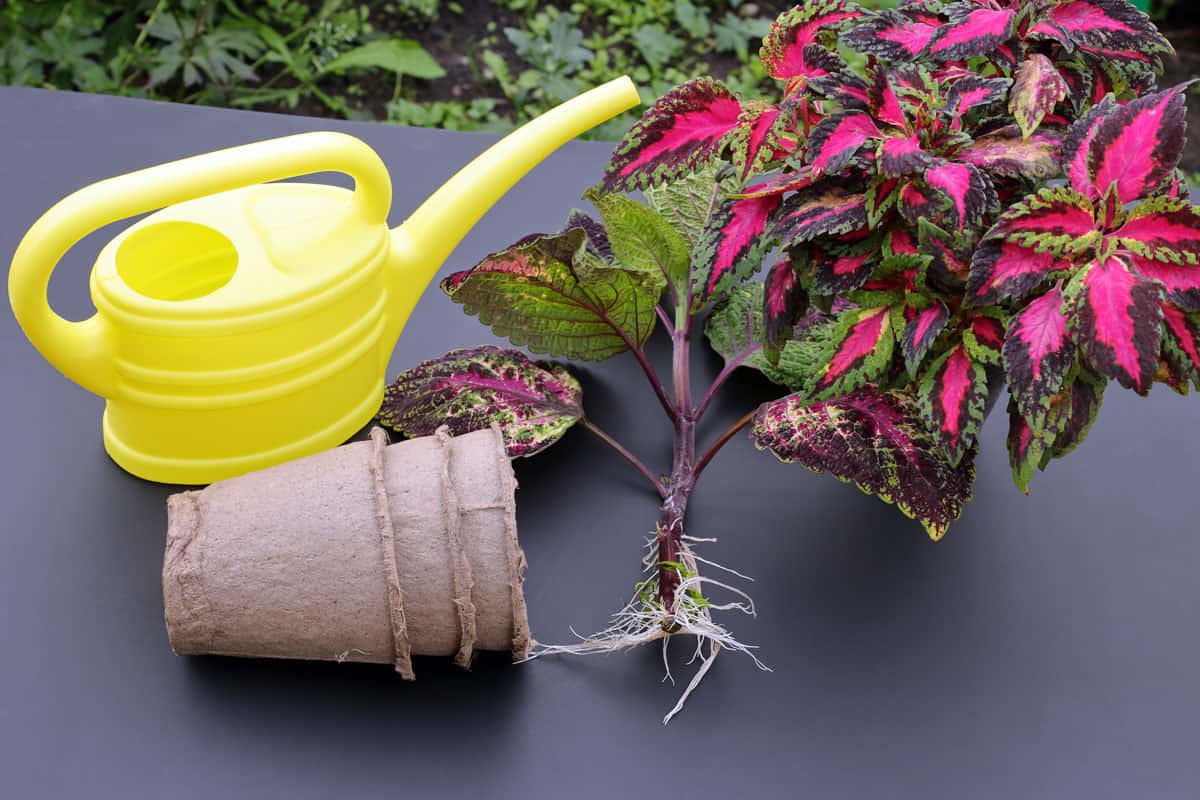
Growing and nurturing Coleus has many advantages, one of which is that it is ridiculously simple to multiply. Coleus is also commonly available for purchase, which is why they are becoming more popular.
The following steps can help you propagate Coleus in your garden:
Buy One At A Flower Shop
This is the simplest method. Coleus typically goes on sale when all of your local bedding out annuals are available. Pick the one that grabs your attention. But also think about how you're going to use it.
Large varieties stand tall and look fantastic in containers as thrillers. Small, low-lying, trailing types exist that can seep from containers.
There are Coleus cultivars that thrive both in the sun and the shade. Select the one that meets the demands of your garden.
Stem/Root Cuttings
It's absurdly simple to root Coleus. Just snip off a fresh, green stem, place it in water, and it will begin to root. It can survive in water for a very long time.
If you want to grow them in soil, get cuttings growing in soil rather than letting them grow enormous roots in water. Then, plant them as soon as possible in the ground.
Because it is more difficult for them to integrate into the soil if they have more extensive roots.
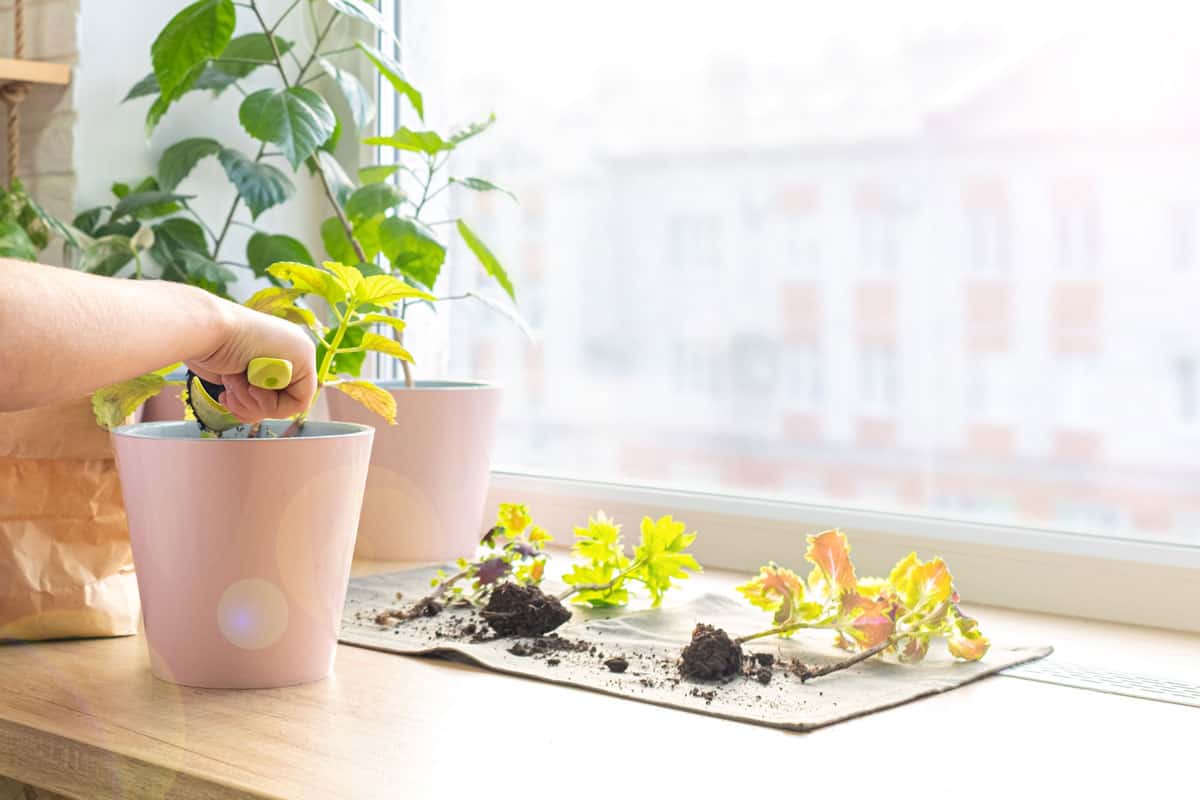
To achieve nice propagation, take your green cutting that has been cut or has been in the water long enough to sprout a few little roots and dip it into the rooting hormone.
Although it is not required, it greatly aids in hastening the emergence of the roots.
See this rooting hormone on Amazon.
After that, plant the cutting in potting soil that is uniformly moist. For about a week, keep the cutting out of the sun and cover it with a plastic dome cap or bag.
Remove the covering after a week and move to the sun.
Throughout this process, ensure the soil is consistently moist but not drenched. You could tell if the roots were effective because the first two sets of leaves would have brightened up.
Seeding
Today's Coleus varieties are hybrids nearly always grown from cuttings potted up for nursery sales, but many types of seeds are still available.
Start indoor seedlings around 8 to 10 weeks before your last frost date if you wish to grow Coleus in an outdoor garden.
Growing Coleus from seed is simple. The seeds' germination time can be as long as 21 days.
It will take a warm period of three to four weeks after seedlings emerge to properly develop into mature plants. But don’t forget to look for seeds from a reliable supplier.
In planting the seeds, sprinkle them on the tray with the potting mix, then spread a little soil over them. Cover the tray with plastic until the seedlings sprout, and place it somewhere sunny and warm.
Check out this seedling tray on Amazon.
Remove the plastic and continue growing the seedlings while maintaining moist soil.
When the seedlings have two sets of true leaves, carefully move them into their pots and let them grow there until it is time to plant them outdoors.
To Finish It Up
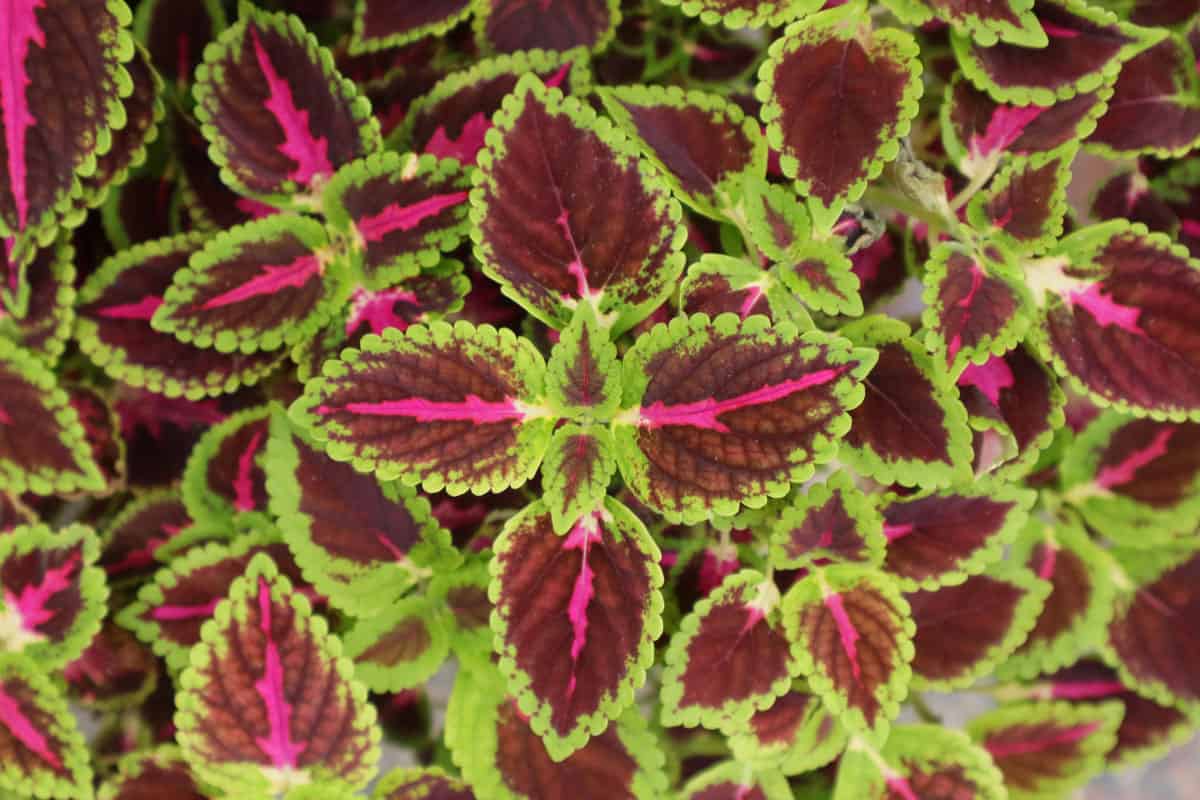
A Coleus is an eye-catching option that thrives well everywhere. With the pruning guide above, you can make your Coleus bushy.
However, pruning is still necessary regardless of whether you want it bushy because if it isn't maintained, the branches may get too heavy and break if it overgrows.
Check out some plant-related topics below:








